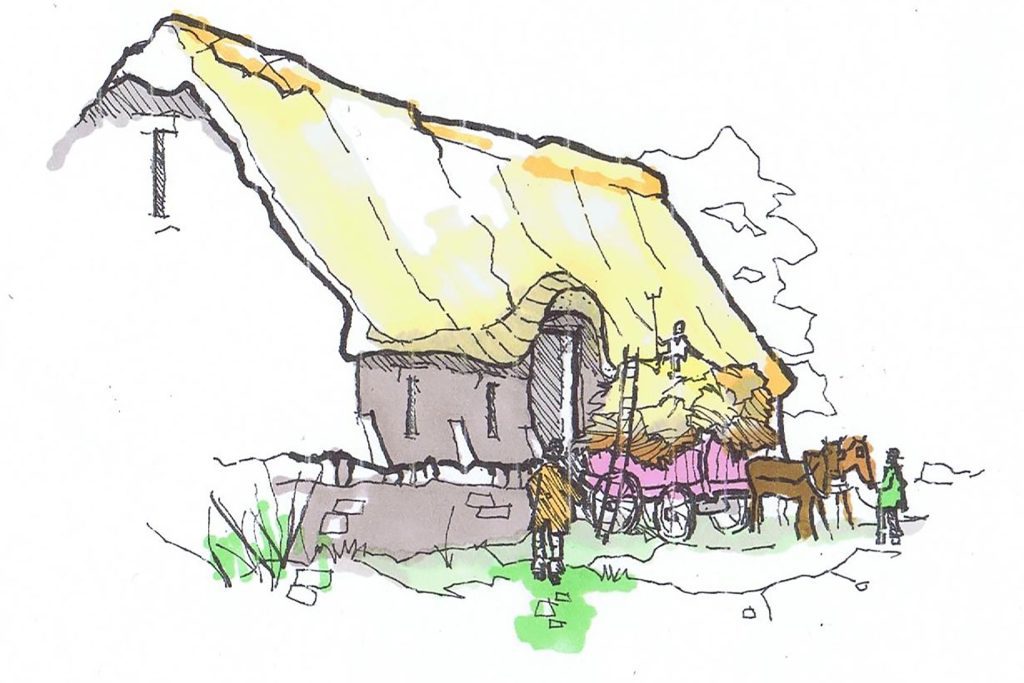The Tithe
Is the Rhiwbina we know now very different to the one that existed 200 years ago? Nigel Lewis goes back in time to find out
Midsummer Day was on the 24th June this year, and it started me thinking about midsummers in Rhiwbina in earlier times.
In 1801, the population of the whole parish was less than 700 and the population of Rhiwbina (or Rhyd-y-Walla as it was called then) would have been no more than 70-100 folk. They would have been living in one of the five or six local farms or the scattered cottages nearby; hardly big enough to call itself a hamlet!
There was a mill, probably a forge, and perhaps a beerhouse. No churches or chapels back then.
So, what would Rhiwbina have looked like? There would have been footpaths, rough stone tracks for farm wagons and lots of open fields with hedgerows. There would have been many trees too, with areas of ancient woodland, and of course the stream Nant-Waedlyd running through.
There was a road (of sorts) further east running up to Thornhill, and linking with Cardiff to the south. Then there was the ancient route through Whitchurch to Llandaff via a ford across the River Taff. The whole of the area was self-sufficient and there was hardly any reason to travel. Rhiwbina back then had hardly changed since medieval times.

Midsummer in such a rural area was as close to a hive of activity as could be imagined. Dawn, well before 6 o’clock, and not getting dark until 10, this was a busy time for the whole hamlet. Everyone turned out, from the youngest to the eldest. Everyone had their particular role.
Nowadays, if we have time and a garden, we might grow some flowers and a few tomatoes. Two hundred years ago, every cottage would have to grow sufficient vegetables to sustain the family for the whole year. Back then, not only was everyone incredibly busy in the fields, but there was also the cottage garden to tend to.
The local farms varied in size from just a few fields to twelve or more for the larger ones. All the work was labour-intensive and even the smallest farm could probably share plough horses and have at least one cow for milking. The larger farms might stretch to a few horses.
Even in the cottages, there would be ducks, and hens for eggs, bees for honey, and pigs! The parish was famous for its pigs. There would be lots of farm dogs and cats (the cats for mousing and ratting!).
In midsummer, the hedgerows would be full of wildflowers, but the ‘countryside smells’ would have been pungent!
So, who were the farmers, their wives and farm workers? There were no proper records before the middle of the century (apart from Church records for births, weddings and deaths). Who were their children? Perhaps we’ll never know.
The Census returns begin to help. Who was Rachel Lewis of the Mill and Tir Pudur Farm? What’s her story? And what about George Lewis who owned the narrow strip of land which later became The Butchers Arms; does anybody know?
During the summer months, the fields would be heavy with crops, and by harvest time, the labourers would be hard at work in the fields. Corn stooks scythed by hand and then gathered into haystacks, and then the haywains and heavy horses.
Meals were probably shared in the fields, with much singing, dancing and games. I wonder what the songs and poems were? This must have been a fantastic time, but all lost now!
Within the Tithe Map of 1841, the landowners and tenants were all listed; even the names of farm fields were noted, giving clues as to how they were used. As Rhiwbina was predominantly Welsh-speaking back then, many of the farms and fields had Welsh names. These include Deri (known then as Tir Pudur), Pentwyn (now Whitchurch Golf Club House), Ty’n-y Cae, Ty’n-y-Parc, Glannant (now a Toby Inn), Greenhill, Graig, and a tiny farm alongside the old woollen mills named Cwmgwynlas. There were probably more; Rhiwbina Farm was probably the oldest, dating from before the conquest!
One tenth of the harvest was gathered into the parish tithe barn in part payment of rent. Our tithe barn was located on the Merthyr Road just south of the Hollybush pub; the biggest building in the parish. It must have been really ancient, with stone walls and a thatched roof. The sketch gives a flavour of how it might have looked at harvest time. It’s not there anymore as the thatch caught fire in February 1900, and the whole thing was destroyed. Another of our lost buildings!
It wasn’t long after this idyllic pastoral scene that everything seemed to change. The roads improved, the railway arrived, and the Victorian era stamped its presence.

Farm practices changed with mechanisation; fewer farm labourers were needed. But over the following decades, Rhiwbina expanded, with houses and schools built. Buses, cars, and bicycles became common and shops and chapels popped up. There are hardly any fields left now.
What a change in just 200 years. The population of Rhiwbina now exceeds 11,000, with 28% listed as ‘professional’. And how many agricultural? Precisely 0%.
Yes, what a change! But we still have our midsummers.
Nigel Lewis is a member of AWEN@thelibrary (awen.cymru@gmail.com)

